Same Day Shipping EMI & COD on most products
Trusted Partner Since 1969
GST B2B Billing  Help
Help  00919699976817
00919699976817
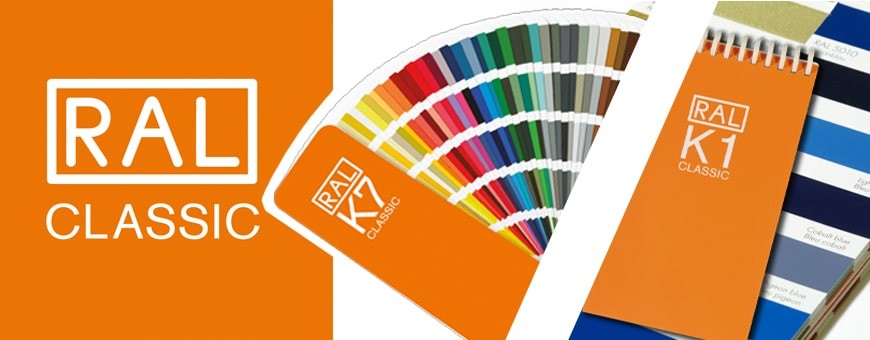
Showing all 9 results
![RAL K7 Colour Shade Chart Fan Deck 213 RAL CLASSIC Cards [2022 Edition]](https://www.designinfo.in/wp-content/uploads/nc/p/1/1/6/116-364x364-optimized.jpg)
![RAL K5 Colour Charts (2 Pieces Combo) Semi Matte & Gloss [2022 Edition]](https://www.designinfo.in/wp-content/uploads/nc/p/6/4/0/7/6407-364x364-optimized.jpg)
![RAL K5 Semi Matte Colour Chart Classic (216) Shade Card [2022 Edition]](https://www.designinfo.in/wp-content/uploads/nc/p/1/1/4/114-364x364-optimized.jpg)
![RAL K5 Gloss Shade Card, Colour Chart Classic Fan Deck [2022 Edition]](https://www.designinfo.in/wp-content/uploads/nc/p/1/1/5/115-364x364-optimized.jpg)
![RAL K1 Paint Shade Card Booklet 213 RAL CLASSIC Colours Chart [2022 Edition]](https://www.designinfo.in/wp-content/uploads/nc/p/7/9/0/790-364x364-optimized.jpg)
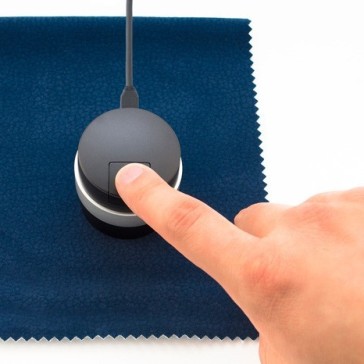
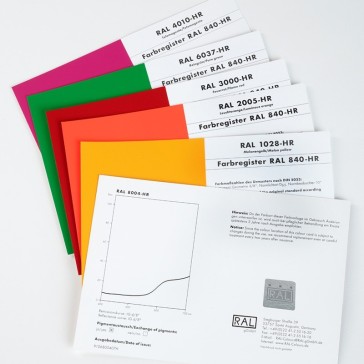
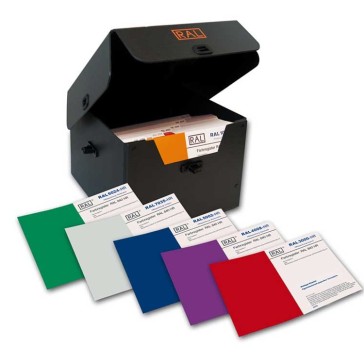
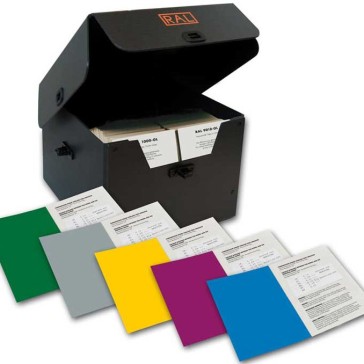
RAL Classics Shade Colour Charts & Brochures
The RAL Classic Shade Cards & RAL Classic Colour Charts have each 213 shades updated from the earlier edition of 210 shades. These Classic colors have been neatly distributed in 5 different types of color charts. RAL Color Charts each have the same number of colours differing in their size and feel only.
The RAL Classic shade cards are named with a prefix of ‘K’ before the number. The RAL k5 Classic Shade card is the most common RAL Classic Colour Chart. The RAL K5 Paint shade Card has 2 formats. The shade card with the Gloss feel which is shiny and bright is called the RAL K5 Gloss shade card and has a feel similar to the photographs taken with a polished finish. The other variant in the RAL K5 is the RAL K5 Classic Semi Matte Shade Card. The RAL K5 Semi Matte Colour Chart has 213 shades similar to the glossy shade card but has a much smoother finish which is used in the paint and cement industry.
The smaller and less used variant of the RAL Classic Colour Charts is the RAL k1 Colour Chart and the RAL K7 Paint Shade Card. The RAL K7 Classic Colour Chart also has 213 Classic Colours, in the form of a fan type chart which can be easily fit in the pocket and carried around. Ral Classic Colours are mostly used in furniture industry, paint and chemical manufacturing, cement and construction purposes and more standardised places. The RAL k5 Classic especially is one of the best RAL shade cards since it has a large enough size and the colour numbers are present on each shade thus making it easy to interpret the colours and match them with the products. its size is about 5cm X 1.5 cm, thus apt for colour matching.RAL Classic – Creating a revolutionary change in 1927, RAL Classic created its first catalogue with 40 colours. It brought about the utmost efficiency to various industries, which would prior to this innovation made use of samples or swatches to describe tints. As times progressed, the RAL classic kept making additions to its inventory and today consists over 200 shades that are used globally. Out of the colour schemes within RAL classic, 188 of the shades are body colours, 2 shades that resemble mica, 5 daylight luminous shades and include a variety of pearlescent colours. A classic RAL classic category charts are used widely in the automobile industry and most of the colours deciphered by this industry can be seen in most of the planes, trains and cars that are seen on a daily basis.
Why use RAL Classics?
With the cascade of colours that are noticed by the naked eye, the colour perception by each person is different. As an architect and artist who draws inspiration from themes, nature, monuments and the basic surroundings, they try to incorporate and imitate the colours that are seen. There are themes and ideas which become more familiar to the consumer by the representation of the appropriate colour. Since there are over 1600 colours in a RAL shade chart and every person has a different description and deciphers the shades in a different manner, a set guideline can help in determining the precise colour.
A colour is said to be interpreted on the basis of colourimetric properties, dimensions, hue and saturation. These properties are what influences a human’s perception of colour. All colour shade charts make use of this study, to assess the human’s perception and assign codes to each colour giving it a distinct identity. RAL charts act as essential tools to draw parallels and match the shades. Using RAL colour charts allows the manufacturers to confer with the buyers and have a systematic conversation so that each party is aware of the colour that needs to be used.
Understanding the RAL Classic Color System
The world of colors is vast and diverse, and to bring some order to this colorful chaos, various color systems have been developed. One such renowned system is the RAL Classic.
RAL Classic is a color matching system primarily used in Europe. Originated in Germany, it’s a collection that offers a wide range of shades, ensuring that industries have a standardized palette to work from. Whether you’re an architect, designer, or just someone looking to pick the right shade for your next project, understanding the RAL Classic system can be immensely beneficial.
The Birth of RAL Classic
The RAL Classic color system was introduced in 1927 by the German Reichsausschuss für Lieferbedingungen und Gütesicherung (Imperial Commission for Delivery Terms and Quality Assurance). Initially, it started with 40 colors, but over the years, it has expanded, and today, it encompasses over 200 distinct shades.
Why RAL Classic Stands Out
Standardization: One of the primary reasons for the creation of the RAL Classic system was to provide a standardized color palette. This ensures that a particular shade remains consistent across different products and materials.
Diverse Range: From vibrant yellows to deep blues, the RAL Classic collection offers a broad spectrum of colors. This diversity ensures that there’s a shade for every need.
Easy Identification: Each color in the RAL Classic system is identified by a unique four-digit number. This makes it easy to reference and ensures that there’s no confusion when specifying a particular shade.
Versatility: The colors in the RAL Classic range are not just limited to paints. They can be found in plastics, textiles, and even coatings. This versatility ensures that industries across the board can benefit from this system.
The Future of RAL Classic
With the advent of digital technology and the increasing need for more shades, there have been additions to the RAL system, like the RAL Design and RAL Effect. However, the RAL Classic remains a staple, especially for industries that rely on tried and tested shades. Its longevity is a testament to its effectiveness and relevance in today’s colorful world.
In conclusion, the RAL Classic color system is more than just a collection of shades. It’s a legacy, a standard, and a testament to the importance of consistency and quality in the world of colors. Whether you’re a professional or a color enthusiast, understanding this system can add a vibrant hue to your projects.
RAL Classic is a color matching system primarily used in Europe. Originated in Germany, it provides a standardized palette of over 200 distinct shades, ensuring consistency across various industries and products.
The RAL Classic color system was introduced in 1927 by the German Reichsausschuss für Lieferbedingungen und Gütesicherung. It began with 40 colors and has since expanded to encompass over 200 shades.
The RAL Classic system offers standardization, ensuring that a particular shade remains consistent across different products and materials. Its unique four-digit identification for each color eliminates confusion, making it a reliable choice for various industries.
Yes, apart from RAL Classic, there are additions like RAL Design and RAL Effect. However, RAL Classic remains a foundational system, especially for industries that prioritize tried and tested shades.



Most units are shipped same day using professional courier services with tracking.
We work round the clock to ensure you get the highest level of customer satisfaction.
Well packed, Sealed Units are shipped from our warehouse which are waterpoof & sturdy.
Design Info
GST: 27AYUPJ2628P1ZK
No.1, Saremals, Shastri Hall Building,
Nana Chowk, Grant Road West,
Mumbai 400007, Maharashtra, India
New Delhi Branch – South Ex 2, 110049
Also Ships DAILY from Brisbane, Dubai,
Berlin, Barcelona, Detroit & Vancouver.
Connect online / schedule a demo
Call/WhatsApp: +91-9699976817
Email: [email protected]
Live Chat: Business Hours
Follow Us: @designinfo.in
Copyright © 2014-2022 Design Info All Rights Reserved. Feedback on web experience
Since 1969